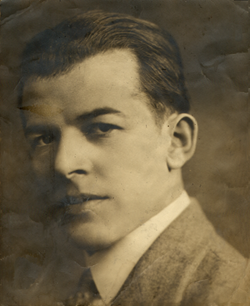

Yiddish History
- Yiddish Language, chief vernacular of Ashkenazic Jews, who are native to,
or who have antecedents in, eastern and central Europe. One of the Germanic
languages, Yiddish is written in Hebrew characters (some of them used differently
than for writing Hebrew). Yiddish (meaning "Jewish") arose between the 9th
and 12th centuries in southwestern Germany as an adaptation of Middle High
German dialects to the special needs of Jews. To the original German were
added those Hebrew words that pertained to Jewish religious life. Later, when
the bulk of European Jewry moved eastward into areas occupied predominantly
by Slavic-speaking peoples, some Slavic influences were acquired. The vocabulary
of the Yiddish spoken in eastern Europe during recent times comprised about
85 percent German, 10 percent Hebrew, and 5 percent Slavic, with traces of
Romanian, French, and other elements.
- Many English words and phrases entered Yiddish, becoming an integral part
of the language as it is spoken in the U.S. and other English-speaking countries.
Apart from vocabulary changes, modern Yiddish differs from modern German mainly
in the simplification of inflections and syntax, the acquisition of a few
grammatical traits influenced by Slavic speech, and its looser pronunciation
of Germanic words. Yiddish pronunciation was also significantly influenced
by Slavic languages. In its word formation and use of auxiliary verbs Yiddish
is similar to English, which also is a Germanic language with a simplified
grammar and a variously enriched vocabulary. Yiddish exists in two groups
of dialects, one of which is further subdivided. The western dialect, with
few speakers, is centered in German-speaking areas of western Europe. The
more widely distributed eastern group has a northeastern branch and a southern
branch. The northeastern branch includes the Yiddish spoken in the Baltic
countries and in the northwestern areas of Russia, and by Jewish immigrants
or descendants from those areas. The southern branch-which has central and
southeastern subgroups-includes the dialects spoken in Poland, Romania, and
Ukraine. Yiddish is a highly plastic and assimilative language, rich in idioms,
and possessing remarkable freshness, pithiness, and pungency. Since it was
spoken by ordinary people rather than by scholars, its vocabulary is weak
in abstractions. By the same token it has few items descriptive of nature,
with which the Jews of eastern Europe had relatively little contact, and a
wealth of words and expressions descriptive of character and of relations
among people. It makes liberal use of diminutives and terms of endearment
and exhibits a variety of expletives. The use of proverbs and proverbial expressions
is considerable. These qualities and usages give Yiddish a uniquely warm and
personal flavor.
- In the early years of the 20th century Yiddish was spoken by an estimated
11 million people living mainly in eastern Europe and the U.S. The use of
the language has been declining since then. The initial cause was the extermination
of the Jewish communities in Poland and other eastern European countries during
World War II. An important factor that also contributed to the decline in
usage was the adaptation by Jews to the languages predominant in the United
States and in the Soviet Union. In 1984, however, a Russian-Yiddish dictionary
containing essays on etymology and grammar was published in the USSR; since
then a few novels by Russian Jews have been written in Yiddish. In Israel
the Hebrew language is predominant, and Yiddish is a second language, cultivated
largely by members of the older generation who have an eastern European background;
only a few modern Israeli poets write in Yiddish. In an effort to ensure its
preservation, the Hebrew University of Jerusalem teaches Yiddish, as do certain
American schools and colleges. The YIVO Institute for Jewish Research, founded
in Poland at the turn of the century and moved to New York City in 1940, includes
the study of the development of the Yiddish language as part of its effort
to preserve the history of Eastern European shtetl, or village, culture.
Home | Biography | Books
& Poetry | A History of Yiddish | Other
Yiddish Literature | Yiddish Language | Yiddish Web Sources
For more information, contact us

